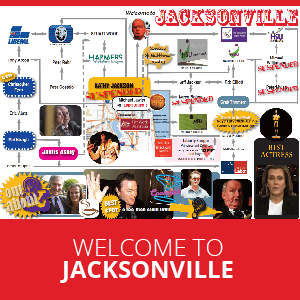Workplace bullying can be disguised, involve organisational culture and legislation is needed to call it out and protect the integrity of the workplace, writes Gerry Georgatos.
WORKPLACE BULLYING is a pervasive issue that undermines employee wellbeing, organisational productivity and social cohesion. It has a pernicious diminution of workplace morale and can be psychologically injurious.
I have been the general manager of 160 colleagues and of 35 colleagues in previous roles, and the national coordinator of suicide postvention responders — 15 colleagues. Over the past two decades, Australia has witnessed increased legislative attention toward curbing such behaviour, culminating in the insertion of anti-bullying provisions into the Fair Work Act 2009 (Cth) (FWA) through the Fair Work Amendment Act 2013 (Cth).
These amendments established a federal jurisdiction for addressing workplace bullying via the Fair Work Commission (FWC). This article critically examines the federal legislative framework governing workplace bullying in Australia, focusing on its legal sources, stakeholder rights and obligations, dispute resolution mechanisms, and contemporary challenges. It evaluates the adequacy and limitations of the current framework and considers reforms necessary to enhance legal responses to workplace bullying.
In doing so, the analysis draws upon legislation, case law, academic commentary and institutional reports to assess whether the legal framework effectively protects employees and promotes safe, respectful workplaces. This article also argues that the worse the bullying, the more intense, the more outrageous – mobbing and lying by management in particular – the sad fact is that they will get away with their reprehension.
Workplace bullying, as defined under s789FD of the Fair Work Act, is repeated, unreasonable behaviour directed towards a worker that creates a risk to health and safety. Historically, responses to bullying in Australian workplaces were fragmented, with state-based occupational health and safety (OHS) laws and common law claims such as negligence or breach of contract serving as primary redress mechanisms. These frameworks often required proof of harm and entailed protracted litigation, offering limited preventive scope.
The introduction of Part 6-4B into the FWA in 2014 marked a pivotal shift in federal workplace regulation. These provisions empowered the FWC to make orders to stop bullying, enabling a non-punitive, fast-track remedy focused on prevention rather than compensation or punishment. This legislative reform stemmed from recommendations of the House of Representatives Standing Committee on Education and Employment in its report, Workplace Bullying: ‘We Just Want It to Stop’ (2012), which exposed systemic failures in addressing bullying and advocated for a national regulatory response.
While the federal regime filled critical gaps, questions persist about its accessibility, effectiveness and interaction with existing OHS laws. Critiques also concern the narrow definitional scope of bullying and the Commission’s limited remedial powers. This essay situates the legislative framework within these historical and policy developments to interrogate whether federal law sufficiently addresses the complex and evolving phenomenon of workplace bullying.
Sources of workplace bullying law in Australia
The primary source of federal law regulating workplace bullying is Part 6-4B of the Fair Work Act. Section 789FD defines workplace bullying and enables affected workers to seek a stop order under s 789FF. The law is enforced by the FWC, which may issue orders to prevent ongoing bullying but cannot award compensation or impose penalties.
Other relevant sources include:
- the Work Health and Safety Act 2011 (Cth) and equivalent state legislation, which impose positive duties on employers to manage risks to health, including psychological hazards such as bullying;
- common law duties of care arising from employer obligations to provide a safe working environment;
- discrimination legislation such as the Sex Discrimination Act 1984 (Cth) and the Racial Discrimination Act 1975 (Cth), which may capture bullying conduct where it is linked to a protected attribute; and
- contract law, where bullying may constitute a breach of the implied term of mutual trust and confidence.
Case law interpreting the FWC's bullying jurisdiction includes Re Bowker; Ex parte CFMEU [2014] FWCFB 9227, where the Full Bench clarified that bullying conduct can arise from cumulative, systemic behaviour rather than discrete incidents. Similarly, Applicant v Respondent [2015] FWC 506, reaffirmed the preventive, not punitive, purpose of s 789FF.
Thus, the legal architecture consists of overlapping regimes of statutory, administrative and common law origin. However, fragmentation remains a concern, with jurisdictional confusion and procedural inefficiencies complicating enforcement.
Rights and obligations of participants
Under the FWA, a “worker” – defined broadly under s789FC(2) to include employees, contractors, apprentices and volunteers – can apply to the FWC for a stop order if bullied at work. The threshold requires repeated, unreasonable behaviour and a risk to health and safety. Importantly, the Act does not require proof of actual harm.
Employers and persons conducting a business or undertaking (PCBUs) are under a positive duty to provide a safe working environment under both WHS laws and the general protections regime in Part 3-1 of the FWA. These duties include implementing bullying policies, training staff and responding to complaints. Failure to take reasonable steps may lead to liability under negligence, breach of statutory duty, or industrial manslaughter provisions in certain jurisdictions.
Co-workers may also be implicated where their conduct constitutes bullying. However, s789FD(2) exempts ‘reasonable management action carried out in a reasonable manner’, recognising the need for legitimate performance management.
Despite these provisions, the power imbalance between employer and employee remains a barrier to effective redress. Many employees fear retaliation or dismissal when reporting bullying, which underscores the importance of robust procedural protections and whistleblower safeguards. For me, it is personal — living with early onset Idiopathic Parkinson’s Disease, I endured one employer's surprising levels of discrimination, ridicule and lack of inclusivity and eventually “full-blown” bullying despite delivering brilliant work, some of it misappropriated.
This harrowing experience educated me, though I did not contest the employer at the time, and “left” because of the stress and its relentlessness.
Contemporary legal issues and critiques
While the federal framework offers a novel preventive approach, critics argue it is underutilised and insufficiently protective. Data from the FWC shows a relatively low volume of anti-bullying applications, with fewer than 1,000 annually since inception.
Of these, many are resolved informally or withdrawn before hearing and only a small fraction result in binding orders.
Several reasons contribute to this underutilisation:
- Narrow definition of bullying: The requirement for “repeated” conduct may exclude serious one-off incidents, while the “unreasonable behaviour” standard is inherently subjective. This creates evidentiary hurdles and ambiguity.
- Lack of compensation: The FWC can only make stop orders, not award damages. Workers seeking compensation must pursue alternative routes such as workers’ compensation, negligence, or constructive dismissal claims.
- Access barriers: Legal representation is limited in the FWC and many applicants navigate the process without adequate support. For vulnerable workers, especially casuals, migrants, or those in precarious employment, this can be daunting.
- Jurisdictional overlap: The coexistence of FWC and WHS jurisdictions can create confusion, especially where bullying also constitutes a safety risk or discriminatory conduct.
Furthermore, the growing prevalence of remote work raises new challenges. Cyberbullying, digital surveillance and blurred professional boundaries complicate the identification and regulation of bullying in hybrid workplaces.
Scholars such as Forsyth and Stewart have called for reform to consolidate bullying laws, introduce compensation mechanisms and improve public awareness. There is also increasing support for mandatory reporting of bullying incidents and stronger employer accountability.
Dispute resolution frameworks
The FWC anti-bullying regime is intended to offer a fast, low-cost and accessible mechanism to prevent ongoing harm. Section 789FF empowers the Commission to issue orders tailored to the circumstances, including separating workers, modifying reporting lines, or mandating policy changes.
However, several critiques have emerged:
- Lack of enforceability: While FWC orders are binding, the absence of penalties for breach weakens deterrence. Enforcement relies on separate civil proceedings, adding complexity.
- No compensation: The regime does not address harm already suffered. Victims seeking redress must initiate separate legal action, often entailing additional trauma.
- Informality: The FWC encourages mediation and conciliation. While valuable in some cases, informal processes may downplay serious allegations or disadvantage unrepresented applicants.
Alternative pathways include WHS regulators (such as Safe Work Australia) and state tribunals, but again, these vary in scope and accessibility. Internal grievance mechanisms and enterprise agreement procedures also provide avenues, though their efficacy depends on employer culture and HR integrity.
Considering these limitations, commentators have proposed a hybrid model combining preventive orders with compensatory powers and greater integration with WHS authorities. The FWC Benchbook suggests enhancing procedural guidance and case triaging to improve clarity and consistency.
Unfair dismissal
If an alleged victim of bullying is dismissed, the dismissed employee can make a Form F2 application to the Fair Work Commission for unfair dismissal and if the FWC finds in their favour, the amount of compensation awarded (if reinstatement is not ordered) is subject to a statutory cap and certain legal principles.
Maximum compensation:
Under s 392(5) of the Fair Work Act 2009 (Cth):
- the maximum compensation that can be awarded is 26 weeks’ pay (half a year’s salary), or $87,700 (as of 1 July 2025), whichever is less; and
- the dollar cap is indexed annually in line with the High-Income Threshold (s333). The amount was $83,750 in mid-2024 and is now $87,700 (2025 figure), subject to Fair Work Commission updates.
How compensation is calculated:
Compensation is not automatic and is assessed based on a range of factors outlined in s 392(2), including:
- remuneration lost because of the dismissal (such as time out of work);
- mitigation of loss — whether the employee made reasonable efforts to find new work;
- length of service;
- the circumstances of the dismissal, including its harshness and procedural fairness;
- the likelihood the employee would have remained employed if not dismissed;
- any misconduct by the employee that contributed to the dismissal; and
- whether the employer had a valid reason, even if procedural fairness was lacking.
Reinstatement preferred:
It's important to note that under s390(3) of the Fair Work Act, reinstatement is the primary remedy for unfair dismissal. Compensation is considered only where reinstatement is inappropriate.
Discussion
The federal workplace bullying framework represents an important evolution in Australian employment law, recognising bullying as a systemic occupational hazard. Its preventive focus and expansive worker coverage are commendable. However, limitations in scope, enforcement and integration with broader safety and industrial relations frameworks hinder its impact.
The broader implications of these shortcomings include the persistence of bullying in high-risk sectors such as healthcare, education, retail and mining. Psychological injuries caused by workplace bullying remain a leading cause of workers’ compensation claims, contributing to rising employer liability and social harm.
Emerging debates focus on reforming the FWC's role to include restorative justice practices, creating an independent workplace ombudsperson and introducing national standards for bullying prevention. The intersection of bullying with power structures – gender, race, disability – also calls for a more intersectional and trauma-informed approach to legal redress.
Australia stands at a crossroads: either maintain a fragmented approach or pursue a consolidated, holistic legal response to workplace bullying. The latter would better reflect contemporary understandings of workplace dynamics, promote psychological safety and align with human rights standards.
Conclusion
In conclusion, the federal legislative framework governing workplace bullying in Australia has made significant strides by establishing a preventive, non-adversarial mechanism for intervention. However, its limitations – including definitional constraints, lack of compensation and procedural complexity – undermine its effectiveness in fully addressing the harm caused by workplace bullying.
This analysis argues that while the FWC regime fills a key regulatory gap, it requires further reform to ensure accessibility, enforceability and victim-centred outcomes. Integrated dispute resolution frameworks, enhanced legal guidance and expanded Commission powers may provide a pathway forward.
As workplace culture evolves in the face of digitalisation, casualisation and remote work, legal responses must adapt to safeguard the dignity, safety and rights of all workers. A holistic, socio-legal approach that recognises the intersectional nature of bullying is essential for fostering inclusive and just employment practices in Australia.
Gerry Georgatos is a suicide prevention and poverty researcher with an experiential focus on social justice.
 This work is licensed under a Creative Commons Attribution-NonCommercial-NoDerivs 3.0 Australia License
This work is licensed under a Creative Commons Attribution-NonCommercial-NoDerivs 3.0 Australia License
Support independent journalism Subscribe to IA.

Related Articles
- Banning mobiles in schools to curb bullying a band-aid, not a cure
- The plight of political staffers in Australian parliaments
- Rachel Downie Stymies the hidden bully
- Beyond bullying: A Melbourne University medical student's personal account
- The funny, funny, world of celebrity Twitter trolls















